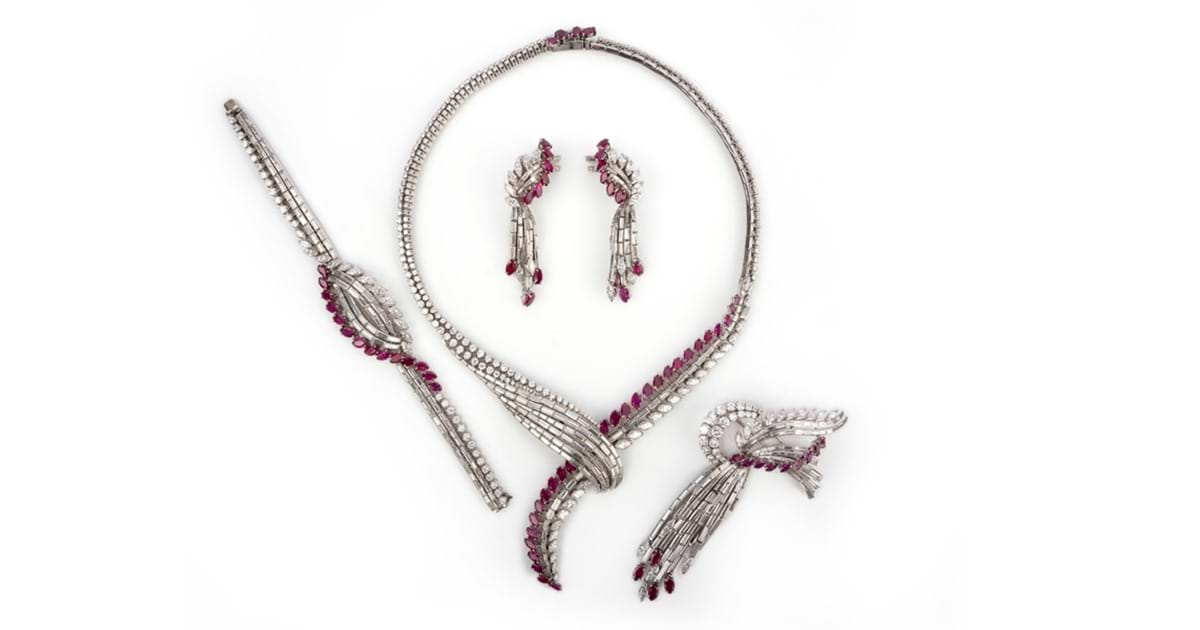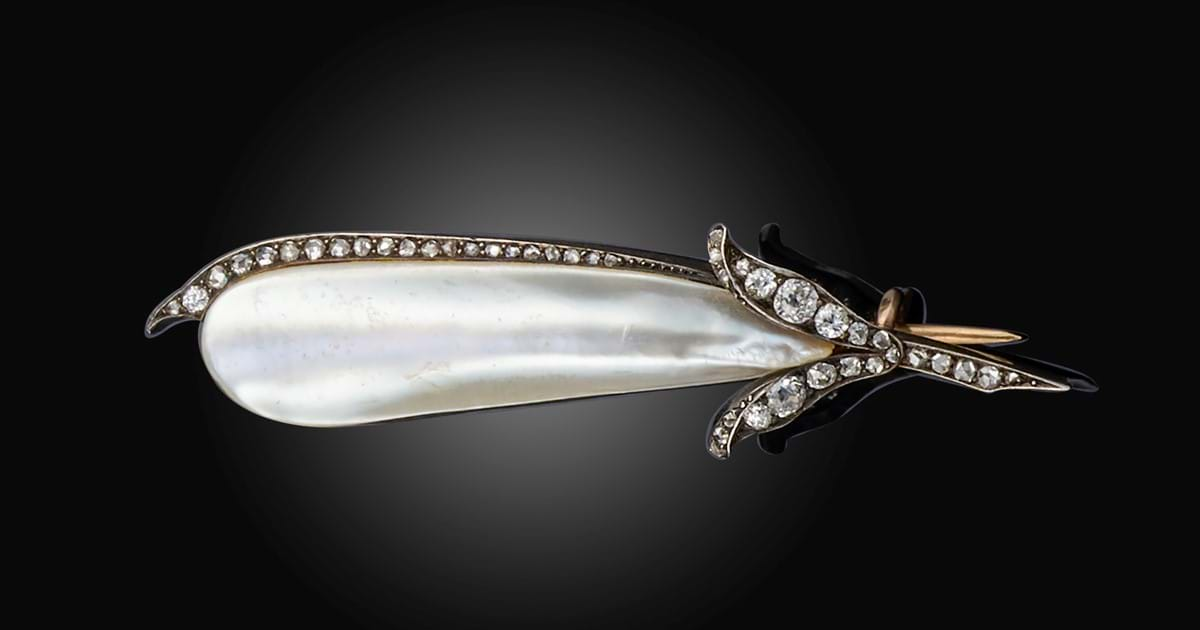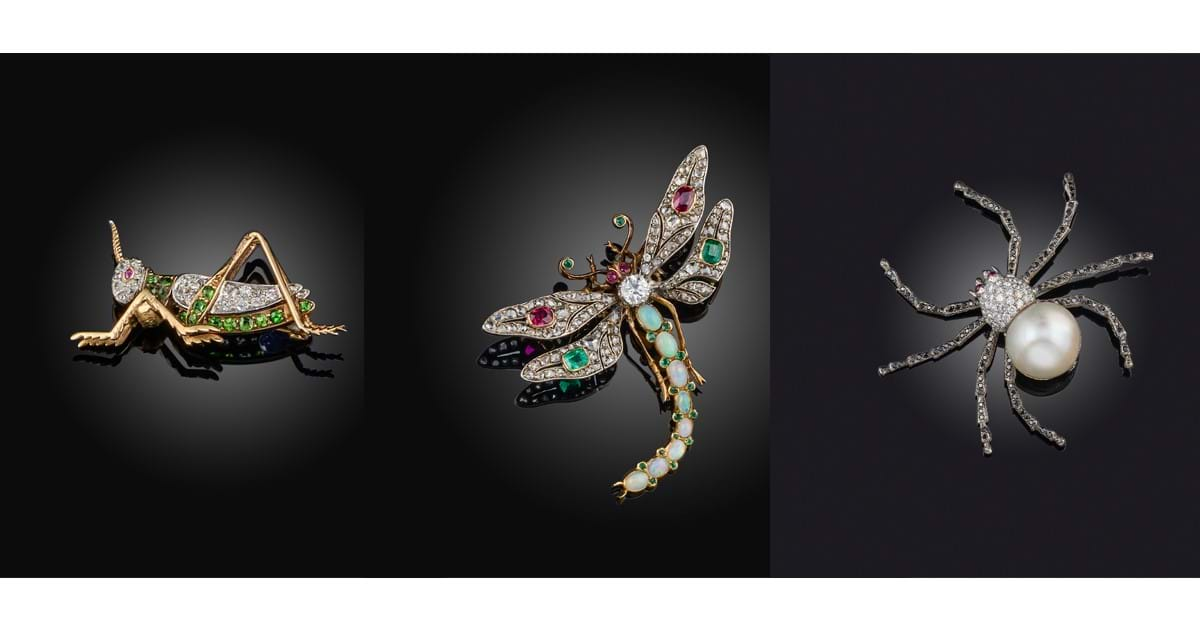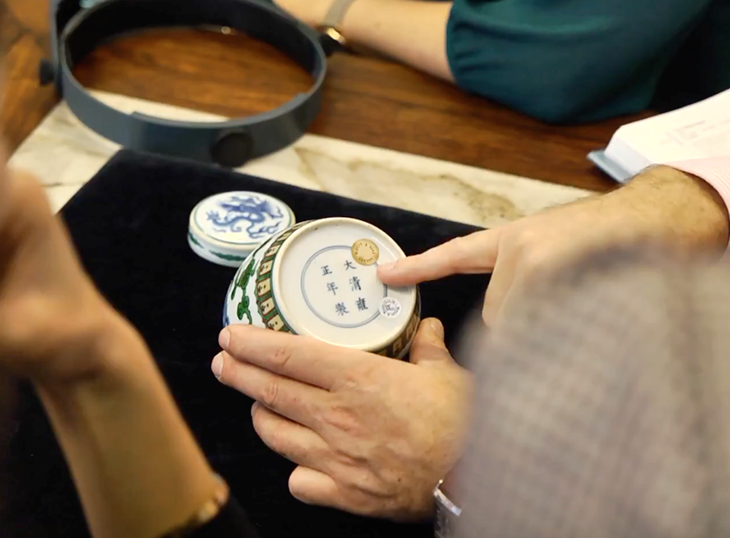Natural forms in jewellery
5th April 2024The world of jewellery design has long been linked to the natural world.
From the precious stones and metals excavated from the earth to pearls and coral extracted from the sea, the materials used for centuries owe everything to nature. But from the time of ancient civilisations, jewels have been designed to echo natural forms.
The Fine Jewellery auction at Woolley and Wallis on 24th and 25th April showcases a number of examples of both antique and modern jewels who have taken the natural world as their inspiration.
Flowers and leaves have long been favoured by jewellery designers, and a pair of Cartier diamond earrings from the 1950s are fabulous examples of this, carrying a pre-sale estimate of £30,000-40,000, while a leaf-inspired ruby and diamond parure from the 1960s is estimated at £20,000-30,000. An earlier flower spray brooch dates from the late 18th century and demonstrates the longevity of the theme, while a mid 19th century topaz and diamond brooch on a green-enamelled stem is a real statement piece at £4,000-6,000.
Delicate flower-inspired pieces came into their own during the fin de siècle and a sapphire, diamond and enamel necklace by Carlo & Arthur Giuliano shows the focus on craftsmanship at this time. A similar piece is illustrated by Geoffrey Munn in his 1984 book on Castellani and Giuliano.
A pair of diamond drop earrings take autumn rather than summer as their inspiration and feature an acorn suspended from oak leaves. A French green glass and diamond brooch is designed as a spray of four grapes, and an unusual diamond and mother-of-pearl brooch is modelled as a pea pod.
Birds feature prominently, from the detailed Art Deco hoopoe, to a flamboyant mid 20th century Bird of Paradise, set with carved and cabochon rubies. A rare Fabergé bowenite and demantoid carving of a stylised kingfisher uses two of Russia’s gemmological exports, and similar examples were purchased by both Edward VII and his son, the future Duke of Windsor.
A stunning spider uses a cultured pearl to full effect, combining it with unusual black diamond set legs and ruby eyes. From the insect world, a Victorian gem-set and diamond brooch of a dragonfly features a body of cabochon opals, while an early 20th century grasshopper includes demantoid garnets alongside diamonds and rubies.
Other pieces detail frogs, bees, butterflies, horses and a turtle.
“The delicate skill of jewellery designers lends itself perfectly to making jewels that echo the world around us,” said head of Jewellery, Marielle Whiting, “and the fact that 21st century designers are as inspired by nature as the jewellers from over two thousand years ago shows our enduring fascination with it. Although there are some high ticket pieces, there are also plenty of more affordable and very wearable examples throughout both days of the sale.”









